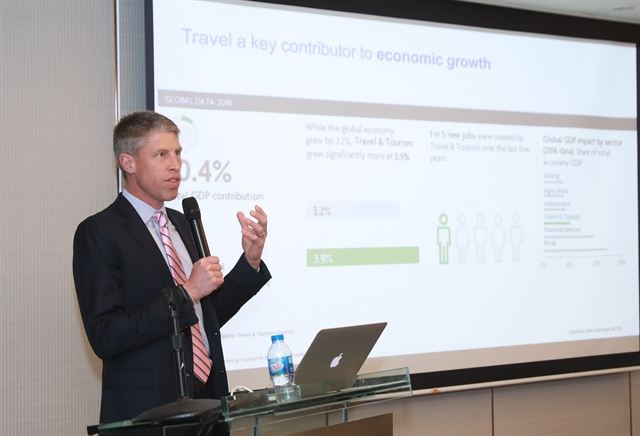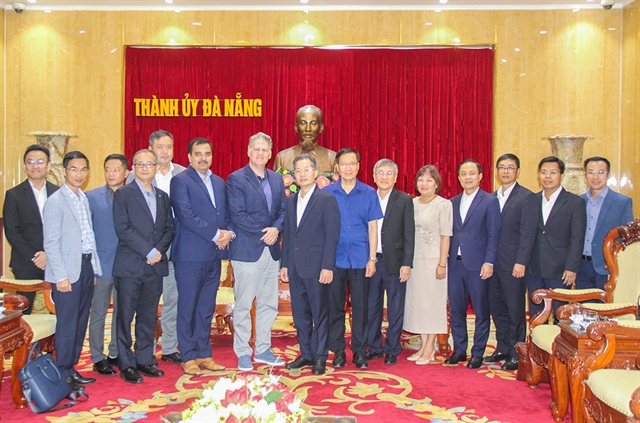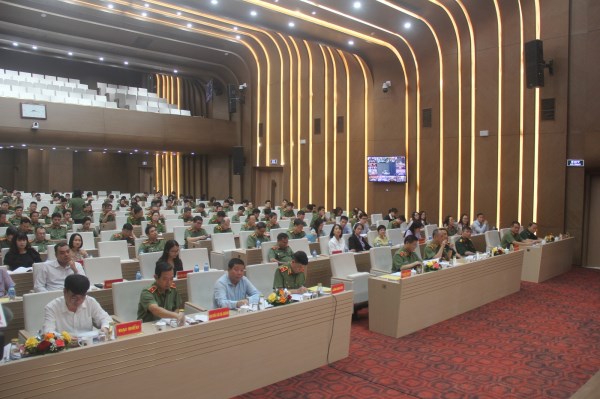 Economy
Economy

The Vietnamese aviation sector will play a major role in the growth of the regional market over the next 20 years, which is forecast to need 4,500 new planes valued at US$710 billion.

|
| Darren Hulst, Deputy Vice President of Commercial Marketing for Boeing, presents the annual Commercial Market Outlook in Hà Nội on Thursday. — VNS Photo |
by Thu Giang
HÀ NỘI — The Vietnamese aviation sector will play a major role in the growth of the regional market over the next 20 years, which is forecast to need 4,500 new planes valued at US$710 billion.
The statement was made by Darren Hulst, Deputy Vice President of Commercial Marketing for Boeing, at a press conference announcing the company’s annual Commercial Market Outlook – the longest-running aviation forecast and regarded as the most comprehensive analysis of the aviation industry – in Hà Nội on Thursday.
Hulst said regional growth will increase demand for commercial aviation services to $785 billion between 2019 and 2038. Việt Nam’s fleet is expected to quadruple in size by 2038.
“Việt Nam has experienced strong aviation growth in the past five years, with air passengers increasing three-fold and a doubling of the airline fleet,” Hulst said.
“Việt Nam is top in Southeast Asia in economic growth. Over the next six years, it’s forecast to gain annual GDP of more than 6 per cent, exceeding other countries in the region. With a middle-class growing faster than anywhere else in Southeast Asia, coupled with a strong international and domestic tourism sector, Viet Nam has become one of the world’s fastest-growing aviation markets,” he added.
He said Việt Nam received over 12 million foreign visitors in 2018 – this figure is expected to double in the next six years.
The GDP growth, a rapid expansion of the middle-class and a strong travel and tourism sector have expanded the size of the domestic Vietnamese aviation market four times from 800,000 monthly seats in 2009 to 3.3 million in 2019.
Hulst said single-aisle airplanes are expected to remain the foundation of domestic and regional fleets in the country, with monthly domestic flights within Việt Nam increasing 3.5 times in the last decade, growing from 5,340 monthly flights in 2009 to 18,680 monthly flights in 2019.
Demand for wide-body airplanes is also driven by new long-haul expansion opportunities in Việt Nam. In 2018, there were about 50 new international city routes opened from Việt Nam with new wide-body aircraft, which will enable Vietnamese carriers in the future to fulfil two of the largest underserved markets from Việt Nam to North America such as HCM City to Los Angeles, and HCM City to San Francisco.
He said the country’s aviation sector is developing, so Boeing can provide long-term forecasting to help the industry set up corresponding infrastructure development. Boeing will also supply solutions to enhance the efficiency of the industry’s existing infrastructure, including runways.
“In terms of supporting training in Southeast Asia, we see demand for over 200,000 aviation professionals in the next 20 years, including technicians and pilots,” Hulst said.
With the role of a supplier for aviation, Hulst said Boeing is interested in providing training for this industry, especially in science and technology with concrete training programmes for pilots and maintenance technicians, supporting and enhancing the industry’s growth in Việt Nam.
“We want to partner with the aviation industry in Việt Nam, creating solutions and programmes so the industry can continue to grow. Because without that growth, we cannot grow,” he added.
Worldwide, Boeing projects the need for 44,040 new commercial airplanes valued at $6.8 trillion and the demand for aftermarket services will total $9.1 trillion over the next 20 years. — VNS









